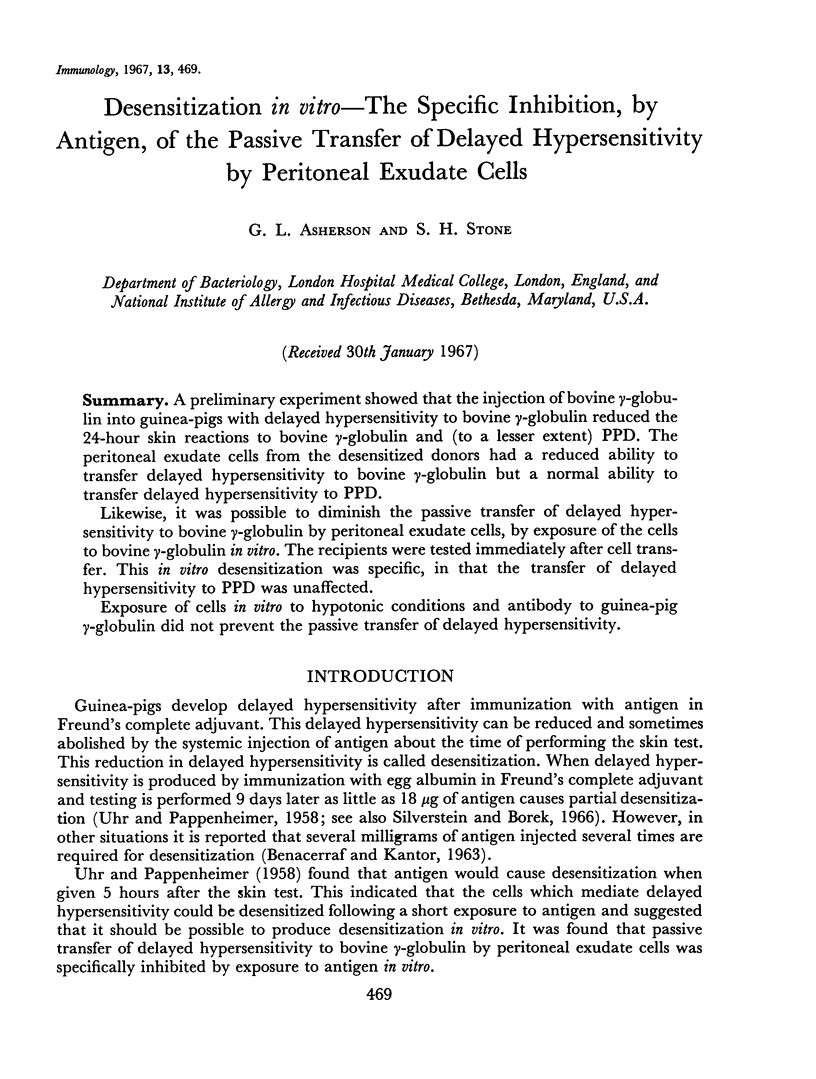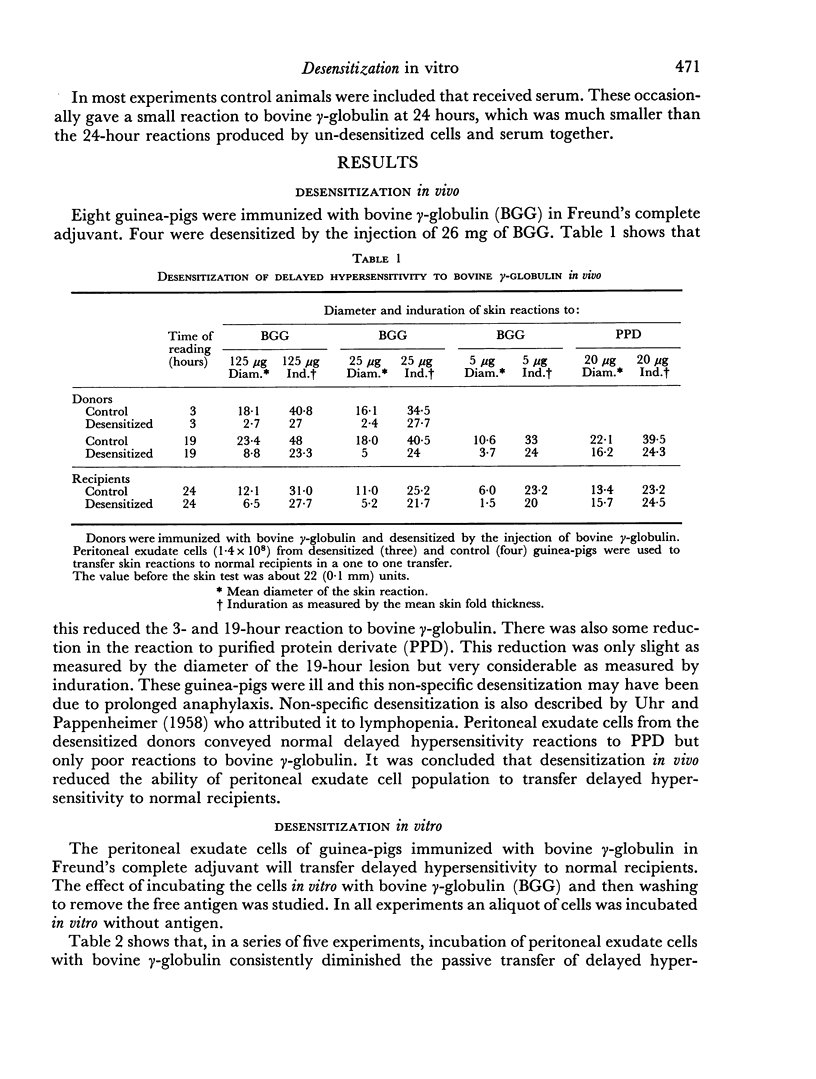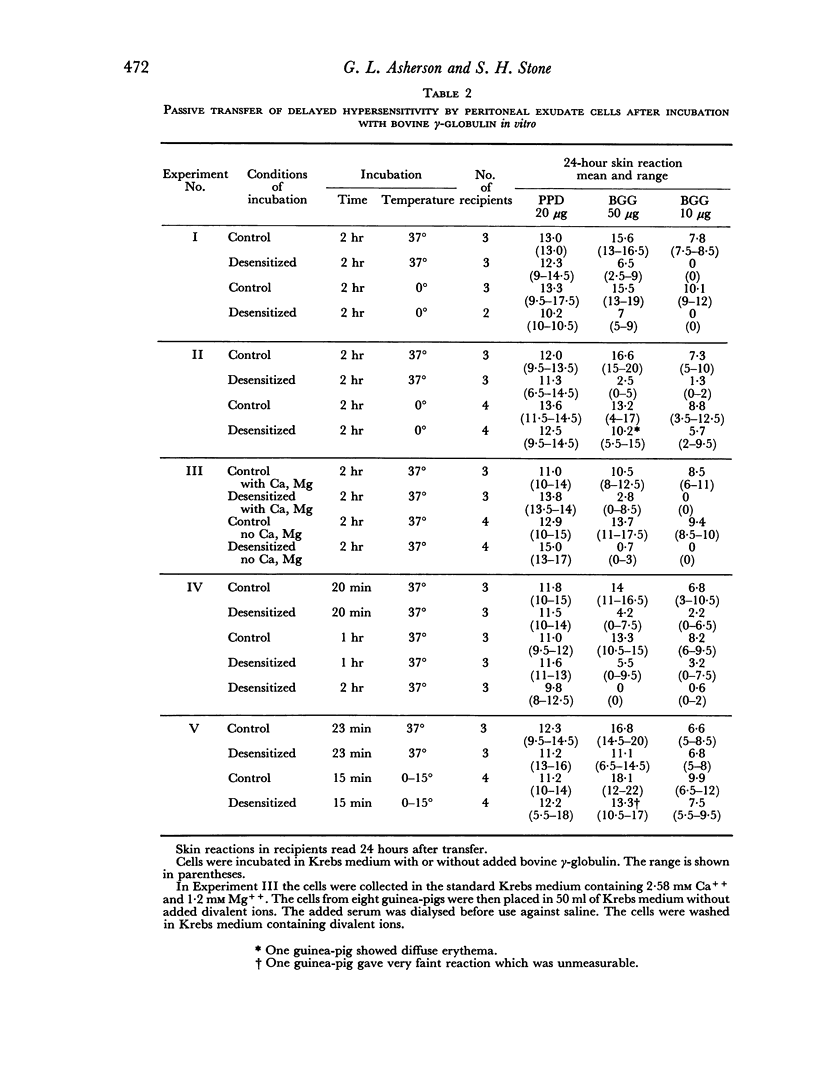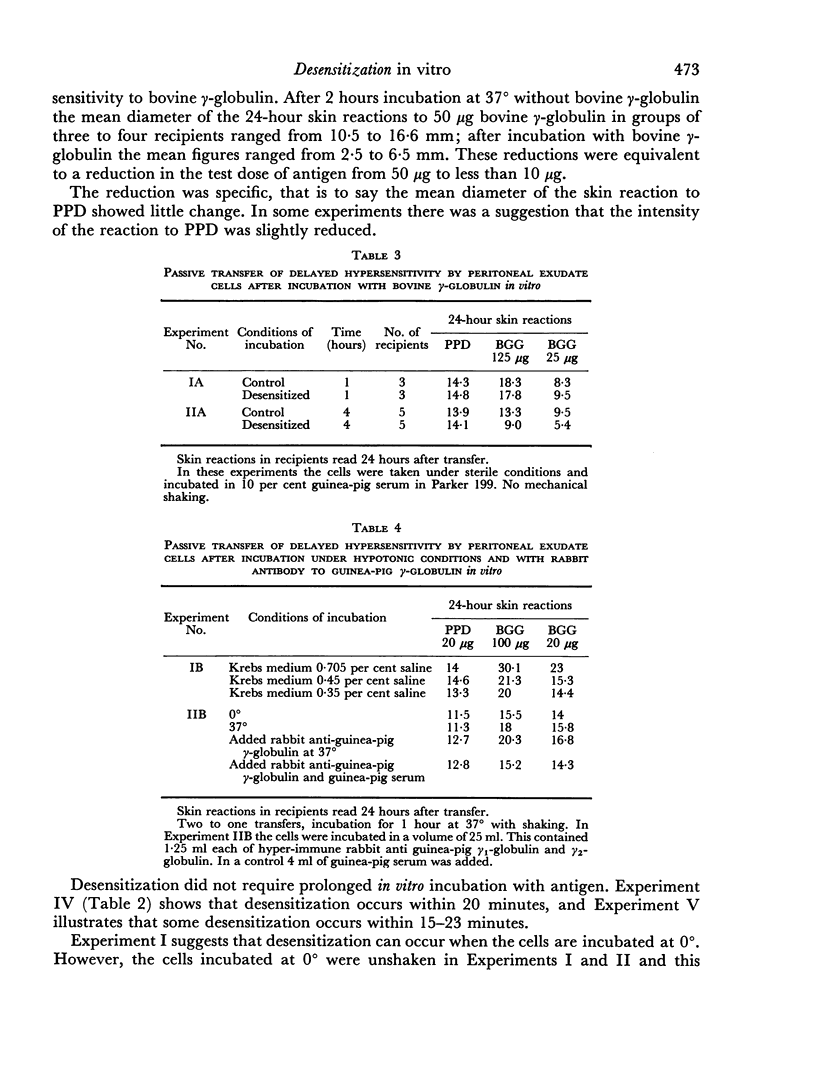Abstract
A preliminary experiment showed that the injection of bovine γ-globulin into guinea-pigs with delayed hypersensitivity to bovine γ-globulin reduced the 24-hour skin reactions to bovine γ-globulin and (to a lesser extent) PPD. The peritoneal exudate cells from the desensitized donors had a reduced ability to transfer delayed hypersensitivity to bovine γ-globulin but a normal ability to transfer delayed hypersensitivity to PPD.
Likewise, it was possible to diminish the passive transfer of delayed hypersensitivity to bovine γ-globulin by peritoneal exudate cells, by exposure of the cells to bovine γ-globulin in vitro. The recipients were tested immediately after cell transfer. This in vitro desensitization was specific, in that the transfer of delayed hypersensitivity to PPD was unaffected.
Exposure of cells in vitro to hypotonic conditions and antibody to guinea-pig γ-globulin did not prevent the passive transfer of delayed hypersensitivity.
Full text
PDF






Selected References
These references are in PubMed. This may not be the complete list of references from this article.
- Asherson G. L., Loewi G. The passive transfer of delayed hypersensitivity in the guinea-pig. I. The synergic effect of immune cells and immune serum on the 24-hour skin reaction and a study of the histology. Immunology. 1966 Oct;11(4):277–285. [PMC free article] [PubMed] [Google Scholar]
- David J. R. Delayed hypersensitivity in vitro: its mediation by cell-free substances formed by lymphoid cell-antigen interaction. Proc Natl Acad Sci U S A. 1966 Jul;56(1):72–77. doi: 10.1073/pnas.56.1.72. [DOI] [PMC free article] [PubMed] [Google Scholar]
- Dvorak H. F., Flax M. H. Immunologic unresponsiveness in the adult guinea pig. II. The kinetics of unresponsiveness. J Immunol. 1966 Mar;96(3):546–553. [PubMed] [Google Scholar]
- Gell P. G., Wolstencroft R. A. Delayed hypersensitivity and desensitization to chemical haptens: antigenic specificity of delayed hypersensitivity. Br Med Bull. 1967 Jan;23(1):21–23. doi: 10.1093/oxfordjournals.bmb.a070509. [DOI] [PubMed] [Google Scholar]
- Leskowitz S., Jones V. E. Immunochemical study of antigenic specificity in delayed hypersensitivity. 3. Suppression of hapten-specific delayed hypersensitivity by conjugates of varying size. J Immunol. 1965 Aug;95(2):331–335. [PubMed] [Google Scholar]
- MCCLUSKEY R. T., BENACERRAF B., MCCLUSKEY J. W. STUDIES ON THE SPECIFICITY OF THE CELLULAR INFILTRATE IN DELAYED HYPERSENSITIVITY REACTIONS. J Immunol. 1963 Mar;90:466–477. [PubMed] [Google Scholar]
- Silverstein A. M., Borek F. Desensitization studies of delayed hypersensitivity, with special reference to the possible role of high-affinity antibodies. J Immunol. 1966 Jun;96(6):953–959. [PubMed] [Google Scholar]
- TROWELL O. A. The optimum concentration of sodium chloride for the survival of lymphocytes in vitro. Exp Cell Res. 1963 Jan;29:220–234. doi: 10.1016/0014-4827(63)90378-1. [DOI] [PubMed] [Google Scholar]
- UHR J. W., PAPPENHEIMER A. M., Jr Delayed hypersensitivity. III. Specific desensitization of guinea pigs sensitized to protein antigens. J Exp Med. 1958 Dec 1;108(6):891–904. doi: 10.1084/jem.108.6.891. [DOI] [PMC free article] [PubMed] [Google Scholar]


